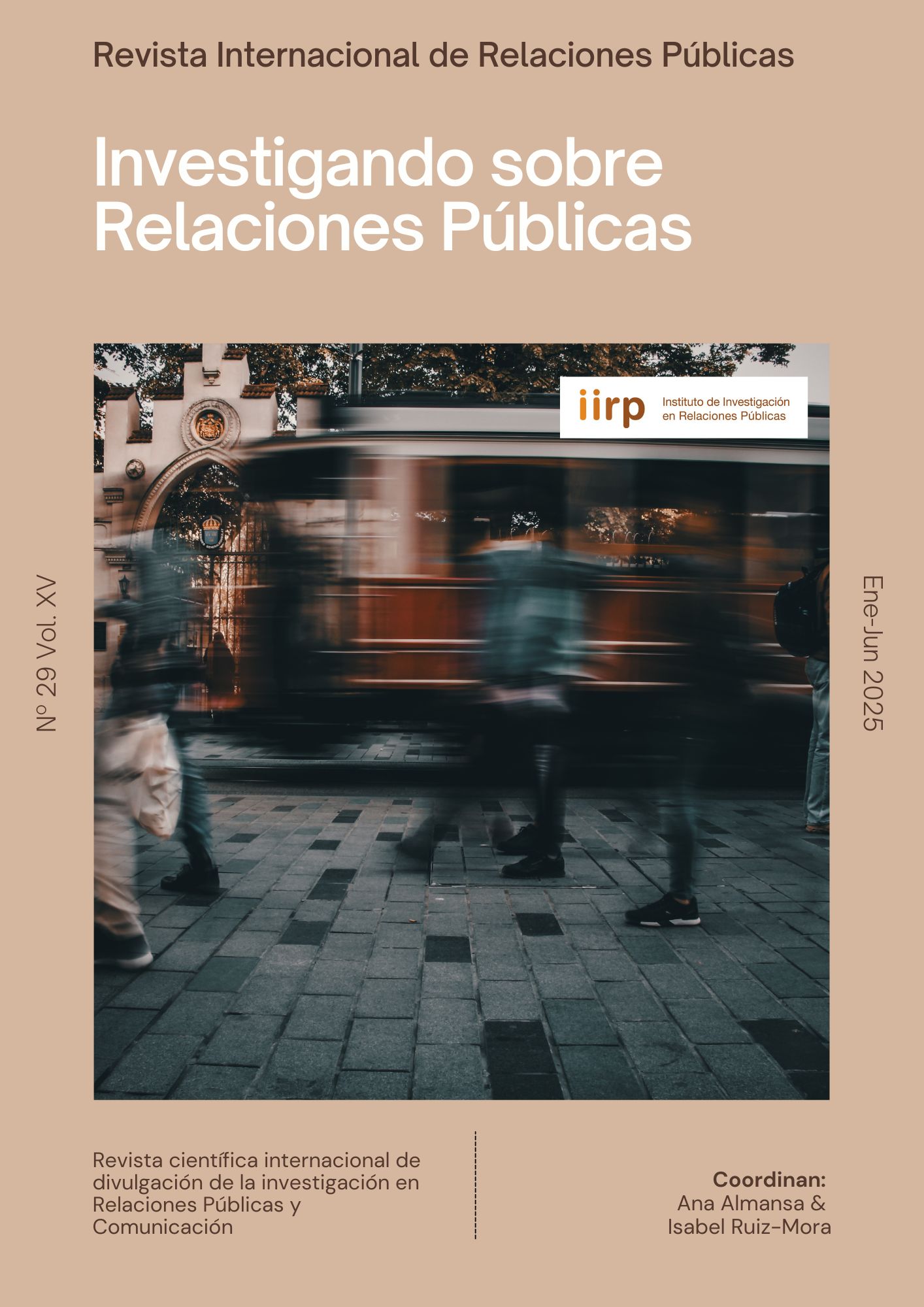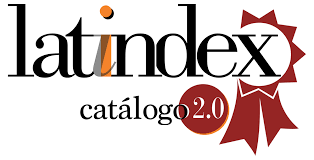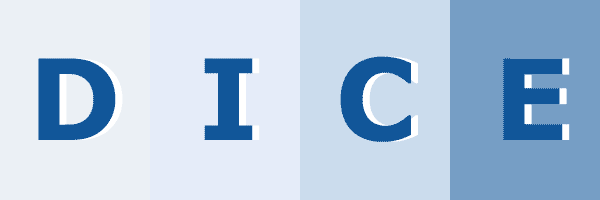Responsible Public Relations in Mental Health
PR Literacy in the Case of Esketamine as a Miracle Cure for Depression
DOI:
https://doi.org/10.5783/revrrpp.v15i29.903Keywords:
Public Relations, publicity, disinformation, PR literacy, health communicationAbstract
Mental health conditions are projected to become the leading cause of disability worldwide by 2030, according to the World Health Organization. In this context, esketamine has entered the pharmaceutical market as a revolutionary treatment for resistant depression, generating growing interest in both clinical and media spheres. It has often been portrayed as a near-miraculous remedy for persistent depression and suicidal ideation. However, its approval and commercialisation have sparked considerable debate among healthcare professionals, researchers, and public health experts, who call for greater caution and scientific rigour in communicating both its clinical benefits and potential risks.
This study critically analyses the instrumental use of communication practices surrounding esketamine, focusing on public relations (PR) strategies and the resulting media coverage. The lack of consensus within the scientific and medical communities regarding its efficacy and safety has led to informational and communicative disorder, generating confusion among the public. This situation is exacerbated when high-profile media figures, such as Elon Musk, trivialise the drug’s use, downplaying potential adverse effects and contributing to a distorted public perception. The simplification of discourse on social media and digital platforms promotes uninformed consumption, especially in contexts where mental health remains stigmatised and access to care is limited.
Pharmaceutical companies have demonstrated considerable ability to influence public agendas through a blend of PR, marketing, and institutional communication. Agenda-setting theory (McCombs & Shaw, 1972; Carroll & McCombs, 2003) is particularly relevant in explaining how certain interests manage to prioritise specific topics in media coverage. In the case of esketamine, this influence is exercised through meticulously designed PR campaigns that conceal commercial objectives behind the sponsorship of events with a seemingly scientific or socially responsible character.
These practices often operate through the mechanism of media framing (Rodríguez, 2004), steering discourse toward a favourable interpretation of the drug while omitting controversial or inconvenient aspects. In many cases, these events generate publicity (Ibáñez-Hernández et al., 2025): promotional content presented in journalistic formats, which appears as neutral reporting but ultimately serves corporate interests.
A mixed-methods approach was applied in two phases. Firstly, a case study was conducted through content analysis (Simons, 2011; Bernete, 2013; González-Teruel, 2015). Using purposive, non-probabilistic sampling, various events related to mental health and the promotion of esketamine held between 2021 and 2024 were selected. Following Codina (2018) and Codina et al. (2020), Google Alerts was used with keywords such as: depression, esketamine, mental health, solution, and awards. Variables included event type, slogan, core message, explicit mention of the drug (esketamine/Spravato®), and participant profiles (politicians, psychiatrists, healthcare professionals, celebrities, patients, pharmaceutical representatives, academics, journalists, and others).
Secondly, a content analysis was carried out on articles published in the digital editions of Spain’s three most widely read general-interest newspapers: El País, El Mundo, and ABC (AIMC, 2024). Specialist press (health, finance, sport, etc.) and regional publications were excluded. The analysis covered all articles published through March 2024, with no fixed start date due to the novelty of the product.
Findings highlight the pharmaceutical lobby’s capacity to position products within public discourse using events as platforms for legitimation. News stories often appeared simultaneously across outlets, indicating a coordinated strategy. Media coverage was frequently decontextualized, minimising or omitting side effects while promoting the drug’s alleged benefits. Furthermore, a transfer of authority was observed, whereby public figures and recognised experts lent their prestige to the narrative of efficacy and safety without disclosing potential conflicts of interest with the manufacturer.
In conclusion, it is imperative to revisit standards of responsible communication and PR codes of conduct within the healthcare sector. The lack of effective regulation regarding lobbying and public affairs in this domain permits the dissemination of biased messages that influence both public opinion and clinical decision-making. Interdisciplinary collaboration among healthcare professionals, communicators, educators, and ethics experts is essential to foster two key civic competences: mental health literacy and public relations literacy, as proposed by Holladay and Coombs (2013). Strengthening these literacies is vital to combat stigma, ensure informed access to treatment, and resist the manipulative power of media narratives promoting so-called “miracle cures”.
Downloads
References
Aguilar Fleitas, B. (2017). Posverdad en medicina. Cómo pensamos y en qué creemos los médicos. Revista Uruguaya de Cardiología, 32(3), 234-239. https://doi.org/10.29277/ruc/32.3.3
Amado-Rodríguez, I. D., Casañas, R., Mas-Expósito, L., Lalucat-Jo, L., Roldan-Merino. J. F., & Fernández-San-Martín, M. I. (2024). Alfabetización en salud mental en adolescentes españoles y su relación con las características sociodemográficas. Revista Española de Salud Pública, 98, e202403018. https://ojs.sanidad.gob.es/index.php/resp/article/view/329
Asociación Española De Neuropsiquiatría. (3 de julio de 2024). Consulta pública previa Proyecto de R.D. de regulación de publicidad de los productos sanitarios. https://tinyurl.com/bdf2maaw
Asociación para la Investigación de Medios De Comunicación (AIMC). (2024). EGM 2ª ola. Recuperado: 15 de julio de 2024. https://reporting.aimc.es/index.html#/main/cockpit
Aruguete, N. (2017). Agenda setting y framing: un debate teórico inconcluso; Asociación Latinoamericana de Investigadores en Campañas Electorales.; Más Poder Local, 36-42. https://ri.conicet.gov.ar/handle/11336/68048
Bernete, F. (2013). Análisis de contenido. En A. Lucas Marín & A. Noboa (Coord.), Conocer lo social: estrategias y técnicas de construcción y análisis de datos (pp. 221-261). Fragua, Fondo de Cultura Universitaria. https://tinyurl.com/ennxcsd3
Blanco, E., & Paniagua F. (2007). Periodismo, Salud y Calidad de Vida. Contenidos y Fuentes. FISEC-Estrategias, Año III, 8, Mesa II, 3-24. https://tinyurl.com/y8y96d2y
Borges Do Nascimento, I. J., Pizarro, A. B., Almeida, J., Azzopardi-Muscat, N., Gonçalves, M., Björklunde, M., & Novillo-Ortiz, D. (2022). Infodemics and health misinformation: a systematic review of reviews. Bull World Health Organ, 100, 544–561. https://doi.org/10.2471/BLT.21.287654
Busse, P., & Godoy, S. (2016). Comunicación y salud (editorial). Cuadernos.info, 38, 10-13. https://cuadernos.info/index.php/cdi/article/view/24237
Cachán, C. (2019). La comunicación ética en salud. En D. Catalán, C. Peñafiel & J.L. Terrón (Coords.). ¿Por qué la comunicación en salud es importante?. Thomson Reuters, pp. 105-121. https://dialnet.unirioja.es/servlet/articulo?codigo=7223615
Cappola, A. R., & Cohen, K. S. (2024). Strategies to Improve Medical Communication. JAMA, 331(1), 70-71. https://doi.org/10.1001/jama.2023.23430
Carroll, C., & McCombs, M. (2003). Agenda-setting Effects of Business News on the Public's Images and Opinions about Major Corporations. Corp Reputation Rev, 6, 36-46. https://doi.org/10.1057/palgrave.crr.1540188
Catalán, D., Peñafiel, C., & Terrón, J. L. (2019). ¿Por qué la comunicación en salud es importante? Avances e investigación. Thomson Reuters. https://dialnet.unirioja.es/servlet/libro?codigo=743331
Codina, L. (2018). Curación de contenidos para periodistas: definición, esquema básico y recursos. Universitat Pompeu Fabra, Facultad de Comunicación, Área de Formatos Digitales e Interactivos. http://hdl.handle.net/10230/34369
Codina. L., Guallar. J., & Lopezosa, C. (2020). Curación de contenidos para periodistas: conceptos, esquema de trabajo y fuentes abiertas. Universitat Pompeu Fabra, Departament de Comunicació, (Serie Digital Digidoc). http://hdl.handle.net/10230/43458
De Andrés, S., & González, R. (2012). La comunicación en el marco de la Responsabilidad Social. Bases para una definición de Comunicación Responsable. Revista Internacional de Investigación en Comunicación aDResearch, 6(6), 14-31. https://doi.org/10.7263/adresic-006-07
Dalton A., & Huamani, K. (3 de octubre 2024). Médico que ayudó a suministrar ketamina a Matthew Perry se declara culpable de cargos de drogas. Associated Press News. https://apnews.com/entertainment/espectaculos-609cb7f0aecb677898ac418d47902df2
Duque, S. (27 de marzo de 2025). Elon Musk y su consumo de ketamina: «La uso como alternativa a los antidepresivos tradicionales». The Objective. https://theobjective.com/lifestyle/2025-03-27/elon-musk-consumo-ketamina-alternativa-antidepresivos/
Fábregas, M., Tafur, A., Guillén, A., Bolaños, L., Méndez, J. L., & Fernández De Sevilla, P. (2018). Guía de estilo sobre salud mental para medios de comunicación: las palabras sí importan. Confederación Salud Mental España. https://www.consaludmental.org/publicaciones/Guia-estilo-salud-mental.pdf
Farmaindustria (2023). Sistema de Autorregulación. Anexo III - Guía de actuación en comunicación y relaciones con los medios sobre medicamentos de prescripción. Recuperado: 12 de agosto de 2024. https://www.codigofarmaindustria.org/sites/sarfi/codigo/codigo.html
García-Cruz, J. C. (2020). El modelo argumentativo de Toulmin como elemento epistémico para la participación ciudadana: una aproximación en tiempos de pandemia. En-claves del pensamiento, 14(28), 29-51. https://doi.org/10.46530/ecdp.v0i28.412
García-Valdecasas, J., Vispe, A., Campelo, V., & Hernández, M. (2022). Esketamina y su lugar en la terapéutica: datos para una valoración objetiva y apuntes sobre el coste de oportunidad. Norte de Salud Mental, 18(67), 45-56. https://dialnet.unirioja.es/servlet/articulo?codigo=8562232
García-Vidal, A. (2013). La promoción de medicamentos dirigida a profesionales sanitarios: Estudio desde la perspectiva del Derecho mercantil. 1st ed. Marcial Pons, Ediciones Jurídicas y Sociales. https://www.torrossa.com/it/resources/an/4321223
Gold, S., Muthuri, J. N., & Reiner, G. (2018). Collective action for tackling “wicked” social problems: A system dynamics model for corporate community involvement. Journal of Cleaner Production, 179, 662–673. https://doi.org/10.1016/J.JCLEPRO.2017.11.197
González-Teruel, A. (2015). Estrategias metodológicas para la investigación del usuario en los medios sociales: análisis de contenido, teoría fundamentada y análisis del discurso. El Profesional de la Información, 24(3), 321-328. https://doi.org/10.3145/epi.2015.may.12
Hallahan, K. (1999). Seven Models of Framing: Implications for Public Relations. Journal of Public Relations Research, 11(3), 205–242. https://doi.org/10.1207/s1532754xjprr1103_02
Holladay, S. J., & Coombs, W. T. (2013). Public relations literacy: Developing critical consumers of public relations. Public Relations Inquiry, 2(2), 125-146. https://doi.org/10.1177/2046147X13483673
Ibáñez-Hernández, A, Papí-Gálvez, N., & Carretón-Ballester, C. (2023). Pharmaceutical Communication in Spain around the COVID-19 Crisis: A Scoping Review. Systems, 11(6), 309. https://doi.org/10.3390/systems11060309
Ibáñez-Hernández, A. (2024). Enfoque crítico de la comunicación responsable en el sector farmacéutico español [Tesis de Doctorado, Universidad de Alicante]. http://hdl.handle.net/10045/147379
Ibáñez-Hernández, A. I., Torres-Valdés, R. M., Arribas-Mato, C., & Quiles-Soler, C. (2025). Prensa escrita, publicity y desinformación: “Curas milagro”, un problema de comunicación en salud y responsabilidad social de los medios. Palabra Clave, 28(Suplemento 1), e28s111. https://doi.org/10.5294/pacla.2025.28.s1.11
Ihlen, Ø., & Fredriksson, M. (2018). Public relations and social theory: key figures, concepts and developments. (2th ed.) New York: Routledge
Instituto Nacional de Estadística (INE) (2021). La salud mental en la pandemia. Lo que dicen las encuestas. Recuperado: 31 de julio de 2024. https://tinyurl.com/dt8ab8nk
Jorm, A. F., Korten, A. E., Jacomb, P. A., Christensen, H., Rodgers, B., & Pollitt, P. (1997). Mental health literacy: a survey of the public's ability to recognise mental disorders and their beliefs about the effectiveness of treatment. Medical journal of Australia, 166(4), 182-186. https://doi.org/10.5694/j.1326-5377.1997.tb140071.x
Jorm, A.F. (2012). Mental health literacy: empowering the community to take action for better mental health. Am Psychol, 67(3), 231-43. https://doi.org/10.1037/a0025957
Landis, J. R., & Koch, G. G. (1977). The measurement of observer agreement for categorical data. Biometrics, 33, 159–174. https://doi.org/10.2307/2529310
Lattuada, P. (2019). Relaciones Públicas, nuevos paradigmas ¿más dudas que certezas? Cuadernos Del Centro De Estudios De Diseño Y Comunicación, 35, 9-15. https://doi.org/10.18682/cdc.vi35.1717
Mandrekar, J. N. (2011). Measures of interrater agreement. Journal of Thoracic Oncology, 6(1), 6-7. https://doi.org/10.1097/JTO.0b013e318200f983
McKie, D., & Munshi, D. (2007). Reconfiguring Public Relations: Ecology, Equity and Enterprise. Routledge.
Marqués Pascual, J., & De Uribe Gil, C. E. (2023). Renovar la ética en las relaciones públicas. Estudio de caso. Revista Española De La Transparencia, 18, 406-425. https://doi.org/10.51915/ret.263
Marín, S., Martínez, F., Ortiz, R., Pellín, M.C., & Pol, E. (2022). Esketamina nasal, ejemplo de medicamento superfluo. Boletín fármacos: prescripción, farmacia y utilización, 25(3), 45-63. https://doi.org/10.5281/zenodo.6981774
McCombs, M. E., & Shaw, D. L. (1972). The Agenda-Setting Function of Mass Media. The Public Opinion Quarterly, 36(2), 176–187. http://www.jstor.org/stable/2747787
Morgado, S. (2023). Comunicar y educar para la salud: el interjuego de nuevos protagonistas y nuevas estrategias. Revista de Psicología de la salud. PSIUC, 9. https://www.ucongreso.edu.ar/revista-psiuc-nro-9/
ORGANIZACIÓN MUNDIAL DE LA SALUD (OMS) (2023). Depresión. Recuperado: 3 de agosto de 2024. https://www.who.int/es/news-room/fact-sheets/detail/depression
Ortega-Rubio, A., Murillo-Amador, B., Díaz-Castro, S.C., Beltrán-Morales, L.F., Gómez-Anduro, G.A., Castro-Iglesias, C., & Blázquez-Moreno, M.D.C. (2020). COVID-19: Los reajustes en el trabajo de investigación científica en México. Terra Latinoamericana, 38(4), 917-930. https://doi.org/10.28940/terra.v38i4.864
Ortiz-Climent, R., & Pol-Yanguas, E. (2022). El origen de la terapia con esketamina. Comentario. Boletín Fármacos: Prescripción, Farmacia y Utilización, 25(2). https://www.researchgate.net/publication/364674854_esketamina_origen
Parlamento Europeo y Consejo de la Unión Europea (2001).Directiva Europea 2001/83/CE del Parlamento Europeo y del Consejo, de 6 de noviembre de 2001, por la que se establece un código comunitario sobre medicamentos para uso humano. Diario Oficial de las Comunidades Europeas, 311, 67–128. http://data.europa.eu/eli/dir/2001/83/oj
Priego, H. (2019). Prólogo en Céspedes Del Fierro, S; Briones, E. & Arango M. Coord. Las Relaciones Públicas como herramienta de promoción de la salud. Universidad Autónoma de Nuevo León. Monterrey. México. http://eprints.uanl.mx/23355/1/23355.pdf
Petrone, F. (2009). Estudio de agenda setting: Conceptos, metodología y abordajes posibles. V Jornadas de Jóvenes Investigadores. Instituto de Investigaciones Gino Germani, Facultad de Ciencias Sociales, Universidad de Buenos Aires. https://www.aacademica.org/000-089/234
Rodríguez, P. G. (2019). Comunicación y salud: un campo transdisciplinar complejo y emergente. En D. Catalán, C. Peñafiel & J. L. Terrón (Coords.). ¿Por qué la comunicación en salud es importante? Thomson Reuters, pp. 89-103. https://ri.conicet.gov.ar/handle/11336/160518
Rodríguez Díaz, R. (2004). Teoría de la Agenda-Setting: aplicación a la enseñanza universitaria. Observatorio Europeo de Tendencias Sociales. https://rua.ua.es/dspace/handle/10045/2297
Salaverría, R. (2021). Entender y combatir la desinformación sobre ciencia y salud. [Informe del Grupo de Trabajo Multidisciplinar (GTM)]. Ministerio de Ciencia e Innovación. https://tinyurl.com/9n72hcud
Seco, M., Andrés, P., & Ramos, G. (1999). Diccionario del Español Actual. Tomo 2 (G-Z). Santillana, S.L.
Simons, H. (2011). El estudio de caso: teoría y práctica. Ediciones Morata.
Stein, B., & Niemann, L. (2014). Strategic role of public relations in enterprise strategy, governance and sustainability-A normative framework. Public Relations Review 40(2), 171-183. Disponible en: https://doi.org/10.1016/j.pubrev.2013.09.001
Stortini, G. (2011). La ética en las Relaciones Públicas. Cuadernos del Centro de Estudios en Diseño y Comunicación. Ensayos, 35, 117-127. https://tinyurl.com/5242xdwm
Torres Valdés, R. M. (2021). Papel confiable de las relaciones públicas en procesos de innovación social. Correspondencias & Análisis, 14, 169-208. https://doi.org/10.24265/cian.2021.n14.08
Wilson, C. (2012). Media and information literacy: Pedagogy and possibilities. [Alfabetización mediática e informacional: Proyecciones didácticas]. Comunicar, 39, 15-24. https://doi.org/10.3916/C39-2012-02-01
Downloads
Published
How to Cite
Issue
Section
License
Copyright (c) 2025 Rosa María Torres-Valdés, Carmen Quiles-Soler, Ana Ibáñez-Hernández, Cristina Arribas-Mato

This work is licensed under a Creative Commons Attribution-NonCommercial-NoDerivatives 4.0 International License.
Authors publishing in this journal agree to the following terms:
a. Authors retain copyright and grant the journal the right to be the first publication of the work as licensed under a Creative Commons Attribution License that allows others to share the work with an acknowledgement of authorship of the work and initial publication in this journal.
b. Authors may separately enter into additional arrangements for non-exclusive distribution of the version of the work published in the journal (e.g., placing it in an institutional repository or publishing it in a book), with an acknowledgement of initial publication in this journal.
c. Authors are allowed and encouraged to disseminate their work electronically (e.g. in institutional repositories or on their own website) before and during the submission process, as it can lead to productive exchanges, as well as earlier and higher citation of published work (see The Effect of Open Access).





